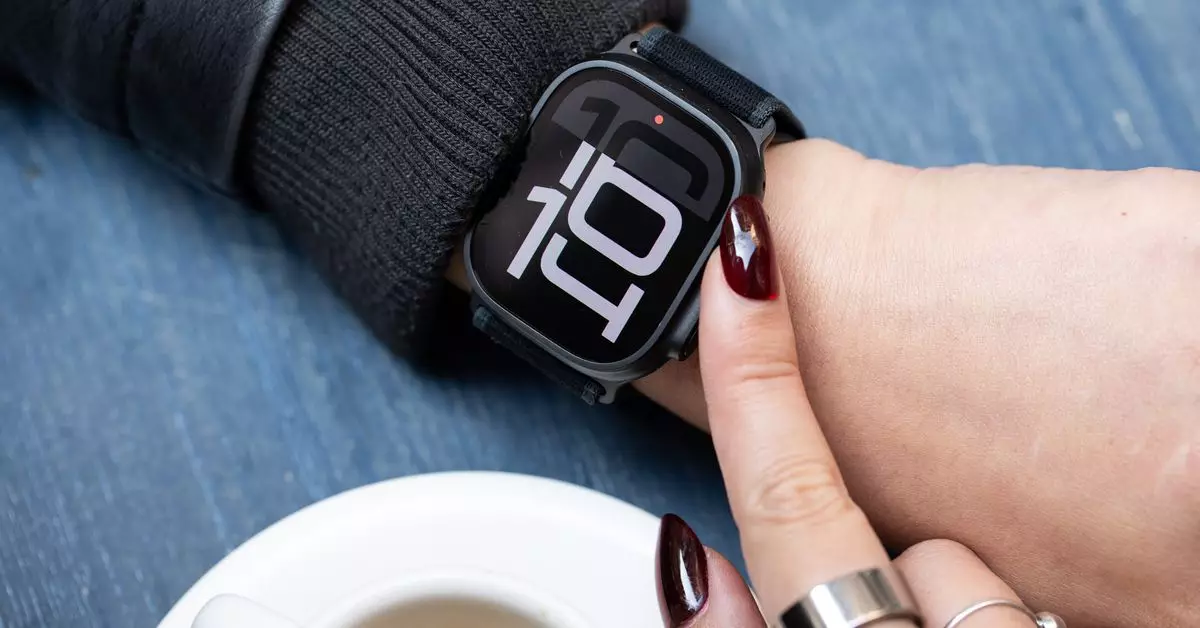In the realm of consumer technology, aesthetics often hold as much weight as functionality. The recent release of the black Apple Watch Ultra 2 exemplifies this phenomenon, raising questions around the true value of color variations in tech products. This examination seeks to understand not only the implications of the new black colorway but also the psychological and emotional ramifications of our attachments to gadgets.
At first glance, the black Apple Watch Ultra 2 might appear to be little more than a recolored version of its predecessor. For those who already own the regular Ultra 2, the idea of upgrading solely for a different hue might seem irrational—after all, the technical specifications remain unchanged. Yet, it’s precisely this aesthetic shift that draws consumers in. The allure of the black variant is not merely in its appearance; it taps into a deeper desire for self-expression through technology.
Colors invoke strong emotional responses. The selection of hues in personal devices often reflects individual personality traits and preferences. For instance, the sleek and mysterious black finish might resonate with users wanting to project an image of sophistication or stealth, reminiscent of iconic characters such as Batman. This yearning for identity representation reveals how consumer choices are often influenced by personal narratives rather than purely functional needs.
Upon slipping the black Apple Watch Ultra 2 onto the wrist, users may experience a unique transformation that transcends the mundane aspects of reality. It offers not just a timekeeping device, but instead an armor of confidence—fueling a sense of empowerment and elevated self-image. This powerful effect can turn a simple photoshoot into a moment of self-discovery, changing perspectives from weary tech reviewer to enigmatic hero with a flair for the dramatic.
Moreover, the interplay of each unique watch face allows for fluidity in identity. The choice of a watch face can be perceived as a daily mood ring, changing how one feels and presents oneself to the world. The ability to embody different personas simply by changing the watch face plays a significant role in how technology assists in personal storytelling. A device like the Apple Watch becomes more than an accessory; it evolves into a crucial aspect of one’s identity, enabling wearers to express various facets of themselves.
The way individuals react to different colors in technology—like the stark contrast between the elation sparked by a pink iPhone and the disdain for a deep purple counterpart—suggests a psychological component at play in aesthetic preferences. It’s an intriguing reminder of how color evokes moods, influences buying behavior, and contributes to perceived value. This phenomenon leads many to ponder the inexplicable joy derived from seemingly trivial purchases.
Research indicates that humans often bypass logical reasoning when making decisions about aesthetic products. A minor cosmetic difference can provoke a strong attraction—something that defies conventional logic. Even amidst the stark reality of life, where practical choices should prevail, the subtle act of indulging in a gadget because it offers satisfaction and joy can provide a comforting respite from daily challenges.
The black Apple Watch Ultra 2 reminds us that not all purchases are rooted in need; many cater to emotional fulfillment. The device serves as a reminder that life’s pleasures can be derived from playful consumerism. Despite the rational voice suggesting one should resist upgrading for mere aesthetics, the internal urge for personal joy and fulfillment can ultimately overshadow cold logic.
This sentiment manifests as an exploration into our motivations for acquisition, encouraging consumers to lean into what makes them feel alive. It emphasizes that, while practicality is essential, embracing the whimsical aspects of consumption can add vibrancy to everyday life. As one navigates these choices, it’s crucial to hold space for desire and delight, allowing oneself the freedom to appreciate beauty—whether it be through the sleek design of a watch or the joy found in its symbolic representation of self.
The case of the black Apple Watch Ultra 2 serves as an intriguing window into our consumer psyche. It reveals how color, design, and aesthetics play pivotal roles in shaping our identities, influencing our desires, and ultimately offering solace in our tumultuous lives. While it might be exceedingly rational to question the need for such a purchase, surrendering to the delight of a beloved gadget can become a meaningful affirmation of individuality. Sometimes, it’s not about necessity, but rather about celebrating the sheer joy of existence—one stylish device at a time.


Leave a Reply